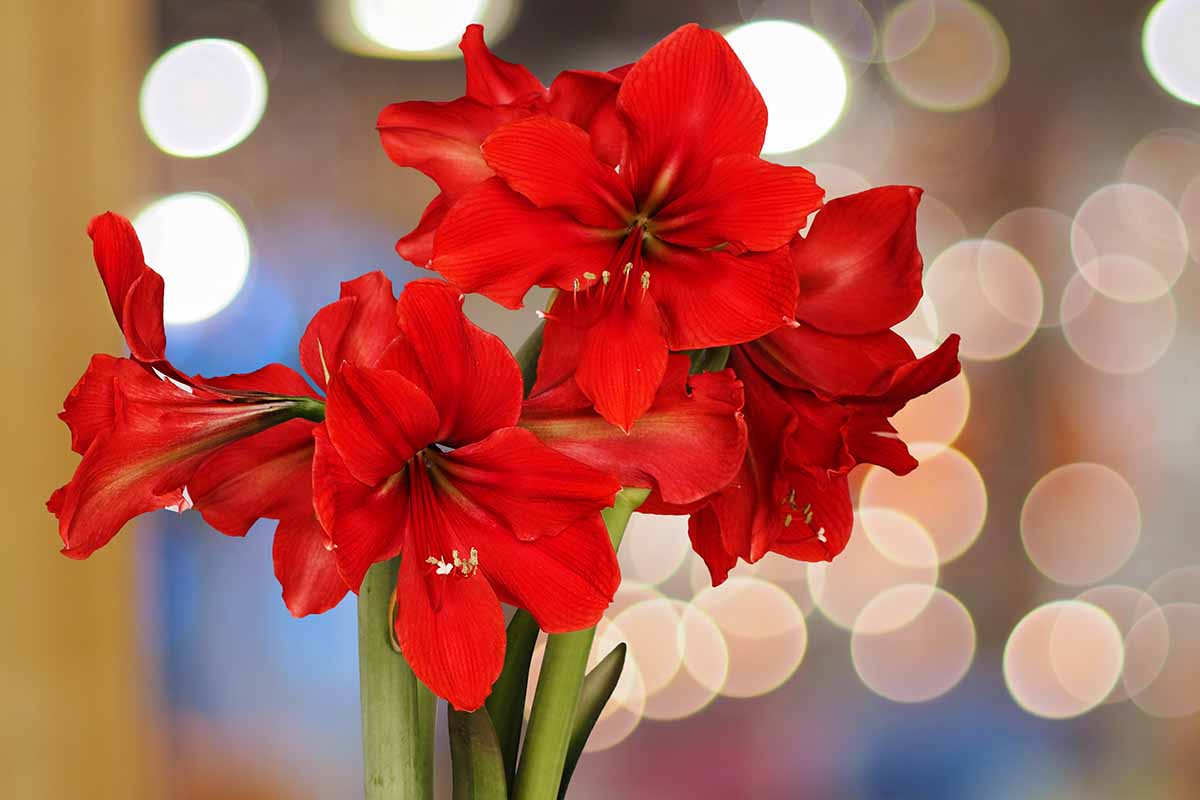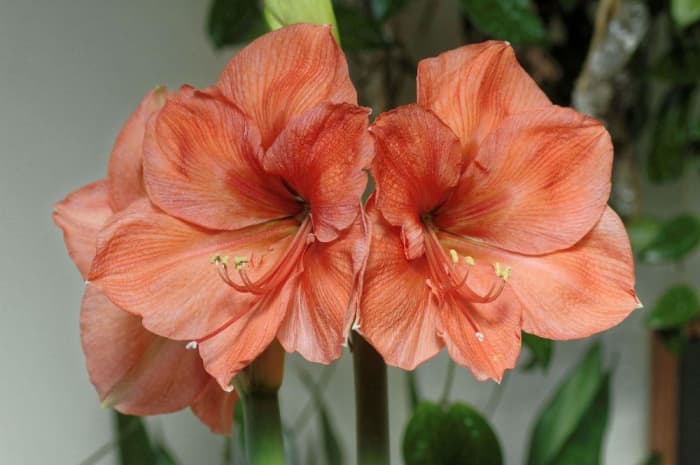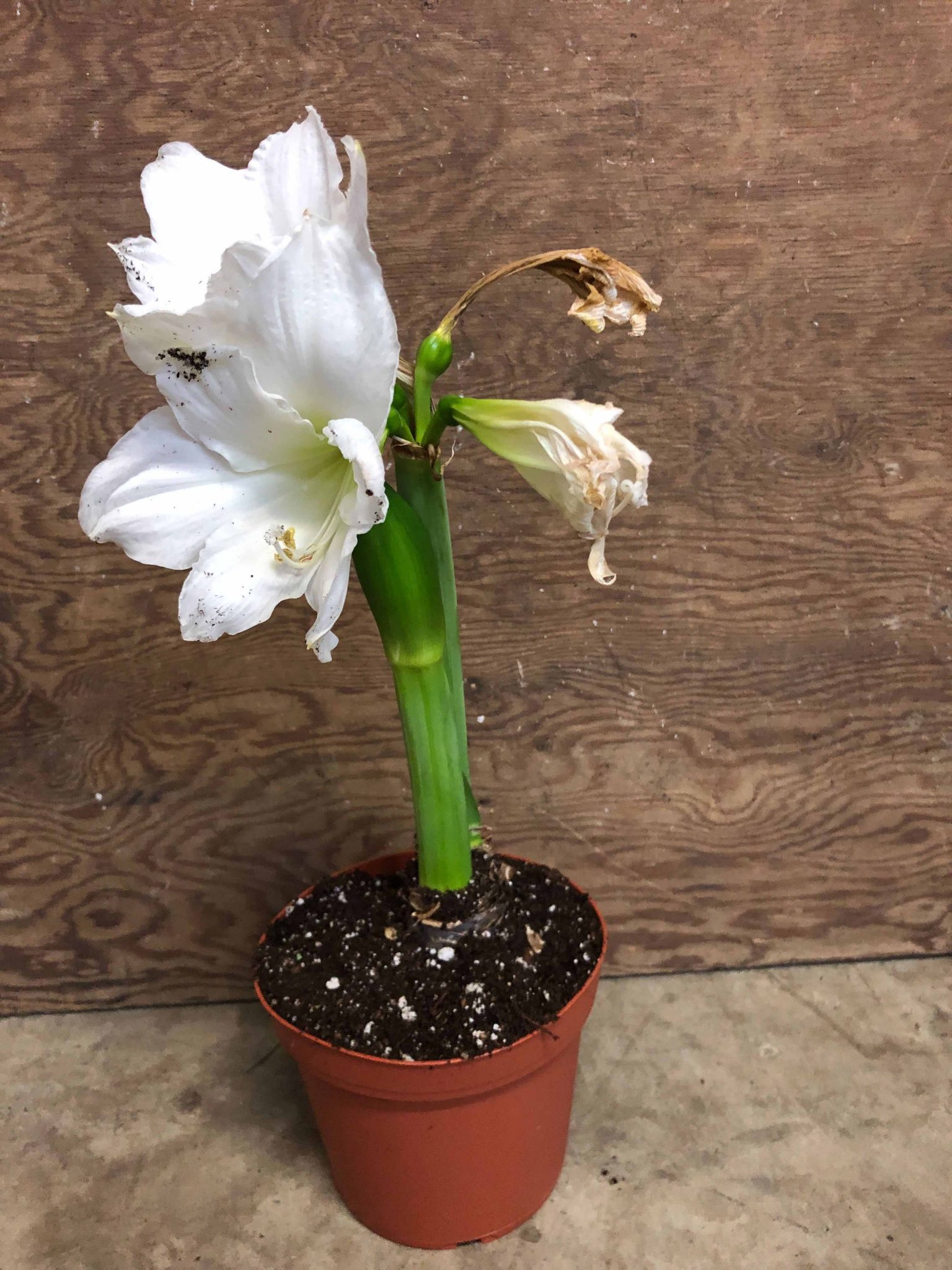Unlocking the Secrets of Amaryllis Growth
The amaryllis plant is a majestic and elegant addition to any indoor space, known for its large, showy blooms and slender, upright growth habit. With proper care and attention, amaryllis plants can thrive and provide beautiful flowers for months to come. But for those new to growing amaryllis, the process can seem daunting. How do you grow an amaryllis, and what are the key factors to consider when cultivating these stunning plants?
One of the primary benefits of growing amaryllis indoors is the ability to control the environment and provide optimal conditions for growth. Amaryllis plants prefer bright, indirect light and consistent temperatures between 65-75°F (18-24°C). They also require well-draining potting mix and careful watering to prevent overwatering, which can lead to root rot and other problems.
By understanding the unique characteristics and needs of amaryllis plants, growers can unlock the secrets of successful cultivation and enjoy the many benefits of these beautiful flowers. In this article, we will explore the key factors to consider when growing amaryllis, from choosing the right variety to providing optimal care and attention.
Whether you’re a seasoned gardener or just starting out, growing amaryllis can be a rewarding and enjoyable experience. With the right knowledge and techniques, you can coax these stunning plants into bloom and enjoy their beauty for months to come. So why not give it a try? With a little patience and practice, you can become an expert in growing amaryllis and enjoy the many rewards of these magnificent flowers.
So, how do you grow an amaryllis? It all starts with choosing the right variety for your space and providing optimal care and attention. In the following sections, we will delve deeper into the world of amaryllis cultivation, exploring the key factors to consider and the best practices for success.
Choosing the Right Amaryllis Variety for Your Space
With over 90 species of amaryllis plants to choose from, selecting the right variety can be a daunting task. However, by considering a few key factors, you can find the perfect amaryllis to suit your space and growing conditions. One of the most popular varieties is the ‘Red Lion’, known for its vibrant red blooms and compact growth habit. Another popular variety is the ‘Apple Blossom‘, which features delicate, pale pink flowers and a slender, upright growth habit.
When choosing an amaryllis variety, consider the color and size of the blooms, as well as the growth habits of the plant. If you have limited space, look for compact varieties like ‘Red Lion’ or ‘Minerva’. If you prefer larger blooms, consider varieties like ‘Apple Blossom’ or ‘Ferrari’. Additionally, think about the level of maintenance you are willing to provide, as some varieties may require more frequent watering or fertilization.
It’s also important to consider the hardiness zone of your area when selecting an amaryllis variety. Some varieties, like ‘Red Lion’, are more tolerant of cooler temperatures and can thrive in zones as low as 4. Others, like ‘Apple Blossom’, prefer warmer temperatures and are best suited for zones 8 and above.
Ultimately, the key to growing a successful amaryllis is to choose a variety that is well-suited to your space and growing conditions. By considering factors like bloom color, size, and growth habits, you can find the perfect amaryllis to add a touch of elegance and beauty to your home. Whether you’re a seasoned gardener or just starting out, growing an amaryllis can be a rewarding and enjoyable experience. So, how do you grow an amaryllis? Start by selecting the right variety for your space, and then follow the simple steps outlined in this guide.
Preparing the Perfect Environment for Amaryllis Growth
Creating a suitable environment is crucial for the growth and blooming of amaryllis plants. To grow an amaryllis successfully, you need to provide the right conditions for it to thrive. This includes factors such as temperature, humidity, and light.
Temperature is one of the most critical factors in amaryllis growth. Most amaryllis varieties prefer daytime temperatures between 65-75°F (18-24°C) and nighttime temperatures around 55-65°F (13-18°C). Avoid placing your amaryllis near heating or cooling vents, fireplaces, or drafty windows, as this can cause temperature fluctuations that may damage the plant.
Humidity is another essential factor in amaryllis growth. Amaryllis plants prefer a relatively high humidity, typically above 50%. To maintain the right humidity level, you can place the pot on a tray filled with water and pebbles or use a humidifier nearby. However, be careful not to overwater, as this can lead to root rot and other problems.
Light is also crucial for amaryllis growth. Most amaryllis varieties prefer bright, indirect light, but not direct sunlight, which can cause the leaves to become scorched. East- or west-facing windows are ideal for amaryllis plants, as they provide gentle, indirect light. Avoid placing your amaryllis in a spot with low light, as this can prevent the plant from blooming.
In addition to temperature, humidity, and light, the potting mix and container also play a crucial role in amaryllis growth. Use a well-draining potting mix specifically designed for bulbs, and avoid using regular potting soil, which can retain too much water and cause root rot. Choose a container that is slightly larger than the bulb, and make sure it has drainage holes to prevent waterlogged soil.
By providing the right environment, you can help your amaryllis plant grow and bloom successfully. Remember, how do you grow an amaryllis? It starts with creating a suitable environment that meets the plant’s specific needs. With the right conditions, your amaryllis will thrive and provide beautiful blooms for months to come.
Planting and Watering Your Amaryllis: A Beginner’s Guide
Planting and watering are two of the most critical steps in growing an amaryllis. To ensure success, it’s essential to follow a few simple steps and avoid common mistakes. When planting an amaryllis, start by selecting a pot that is slightly larger than the bulb. Use a well-draining potting mix specifically designed for bulbs, and avoid using regular potting soil, which can retain too much water and cause root rot.
Next, gently remove the amaryllis bulb from its packaging and trim any dead or damaged roots. Place the bulb in the pot, making sure the base of the bulb is level with the soil surface. Fill the pot with potting mix, gently firming it around the bulb to secure it in place. Water the soil gently but thoroughly, making sure the potting mix is moist but not waterlogged.
Watering is a crucial step in amaryllis care, as overwatering can lead to root rot and other problems. Water your amaryllis when the top inch of soil feels dry to the touch, usually every 7-10 days. Avoid getting water on the bulb or leaves, as this can cause rot and other issues. Instead, water at the soil level, making sure the potting mix is moist but not waterlogged.
It’s also essential to avoid overwatering, which can be detrimental to the health of your amaryllis. Check the soil regularly, and adjust your watering schedule accordingly. If you’re unsure when to water, start with once a week and adjust as needed. Remember, how do you grow an amaryllis? It starts with proper planting and watering techniques.
By following these simple steps and avoiding common mistakes, you can help your amaryllis plant grow and thrive. With proper care and attention, your amaryllis will bloom beautifully, providing a stunning display of color and elegance. Whether you’re a seasoned gardener or just starting out, growing an amaryllis can be a rewarding and enjoyable experience.
Fertilizing and Pruning Your Amaryllis for Optimal Growth
Fertilizing and pruning are two essential practices that can help promote healthy growth, encourage blooming, and prevent pests and diseases in amaryllis plants. When it comes to fertilizing, it’s essential to choose a balanced fertilizer that is specifically designed for bulbs. Amaryllis plants require a fertilizer that is high in phosphorus, which promotes root growth and blooming.
Apply the fertilizer once a month, following the manufacturer’s instructions. Avoid overfertilizing, as this can cause more harm than good. It’s also essential to prune your amaryllis plant regularly to promote healthy growth and encourage blooming. Remove any dead or damaged leaves or flowers, and cut back the flower stalk to within an inch of the bulb after blooming.
Pruning also helps to prevent pests and diseases from spreading. Regular pruning can help to prevent the spread of fungal diseases, such as botrytis, which can cause the leaves to become discolored and drop off. Pruning also helps to prevent pests, such as spider mites and mealybugs, from infesting the plant.
When pruning, use clean and sharp tools to prevent spreading diseases. Make clean cuts, and avoid tearing the leaves or stems. It’s also essential to disinfect your tools after pruning to prevent the spread of diseases.
By fertilizing and pruning your amaryllis plant regularly, you can promote healthy growth, encourage blooming, and prevent pests and diseases. Remember, how do you grow an amaryllis? It starts with proper care and attention, including fertilizing and pruning. With the right techniques and practices, you can enjoy beautiful blooms and a healthy, thriving plant.
In addition to fertilizing and pruning, it’s also essential to provide your amaryllis plant with the right environment. This includes providing the right temperature, humidity, and light. By providing the right environment and proper care, you can promote healthy growth and encourage blooming.
Common Challenges and Solutions for Growing Amaryllis
While growing amaryllis can be a rewarding experience, it’s not without its challenges. One of the most common problems amaryllis growers face is pests, such as spider mites, mealybugs, and scale. These pests can cause damage to the leaves and flowers, and can even spread diseases.
To prevent pests, make sure to inspect your amaryllis plant regularly, and treat any infestations promptly. Use insecticidal soap or neem oil to control pests, and avoid using chemical pesticides, which can harm the plant.
Another common challenge amaryllis growers face is diseases, such as botrytis and root rot. These diseases can cause the leaves to become discolored and drop off, and can even kill the plant.
To prevent diseases, make sure to provide your amaryllis plant with good air circulation, and avoid overwatering. Use a well-draining potting mix, and avoid getting water on the leaves or crown of the plant.
Lack of blooming is another common problem amaryllis growers face. This can be caused by a variety of factors, including insufficient light, inadequate fertilization, and poor temperature control.
To encourage blooming, make sure to provide your amaryllis plant with bright, indirect light, and maintain a consistent temperature between 65-75°F (18-24°C). Fertilize your amaryllis plant regularly, using a balanced fertilizer that is high in phosphorus.
By understanding the common challenges and solutions for growing amaryllis, you can overcome these issues and achieve success with your amaryllis plant. Remember, how do you grow an amaryllis? It starts with proper care and attention, including pest control, disease prevention, and encouraging blooming.
With the right techniques and practices, you can enjoy beautiful blooms and a healthy, thriving plant. Don’t be discouraged if you encounter challenges along the way – with patience and persistence, you can overcome any obstacle and achieve success with your amaryllis plant.
Encouraging Amaryllis Blooms: Tips and Tricks
Encouraging amaryllis blooms requires a combination of proper care, patience, and persistence. One of the most important factors in encouraging blooms is temperature. Amaryllis plants prefer daytime temperatures between 65-75°F (18-24°C) and nighttime temperatures around 55-65°F (13-18°C).
Light is also crucial for encouraging blooms. Amaryllis plants prefer bright, indirect light, but not direct sunlight, which can cause the leaves to become scorched. East- or west-facing windows are ideal for amaryllis plants, as they provide gentle, indirect light.
Fertilization is also essential for encouraging blooms. Use a balanced fertilizer that is high in phosphorus, which promotes root growth and blooming. Apply the fertilizer once a month, following the manufacturer’s instructions.
Another important factor in encouraging blooms is pot size. Amaryllis plants prefer to be slightly root-bound, so use a pot that is only slightly larger than the bulb. This will help to promote blooming and prevent the plant from becoming too leggy.
Finally, be patient and persistent. Amaryllis plants can take several months to bloom, so don’t get discouraged if you don’t see blooms right away. With proper care and attention, your amaryllis plant will bloom beautifully, providing a stunning display of color and elegance.
Remember, how do you grow an amaryllis? It starts with proper care and attention, including temperature, light, fertilization, and pot size. By following these tips and tricks, you can encourage beautiful blooms and enjoy the majesty of the amaryllis plant.
By providing the right conditions and care, you can encourage your amaryllis plant to bloom beautifully. With a little patience and persistence, you can enjoy the stunning blooms of the amaryllis plant and add a touch of elegance to your home.
Maintaining Your Amaryllis After Blooming: A Guide to Post-Bloom Care
After your amaryllis has finished blooming, it’s essential to provide proper post-bloom care to promote healthy growth and encourage future blooms. One of the most important steps in post-bloom care is deadheading, which involves removing the spent flowers and seed pods.
Deadheading helps to direct the plant’s energy towards re-growing and storing energy for future blooms, rather than seed production. Simply snip off the spent flowers and seed pods with a pair of scissors or pruning shears, making sure to leave the foliage intact.
In addition to deadheading, it’s also essential to continue fertilizing your amaryllis plant after blooming. Use a balanced fertilizer that is high in phosphorus, which promotes root growth and blooming. Apply the fertilizer once a month, following the manufacturer’s instructions.
Repotting is also an essential part of post-bloom care for amaryllis plants. After the plant has finished blooming, it’s a good idea to repot it in a slightly larger container with fresh potting mix. This will help to provide the plant with the necessary nutrients and support for future growth and blooming.
When repotting, make sure to choose a pot that is only slightly larger than the previous one, as amaryllis plants prefer to be slightly root-bound. Also, avoid disturbing the roots as much as possible, as this can cause stress to the plant.
By providing proper post-bloom care, you can help to promote healthy growth and encourage future blooms in your amaryllis plant. Remember, how do you grow an amaryllis? It starts with proper care and attention, including post-bloom care. With the right techniques and practices, you can enjoy beautiful blooms and a healthy, thriving plant.
By following these tips and tricks, you can help to ensure the continued health and success of your amaryllis plant. Whether you’re a seasoned gardener or just starting out, growing an amaryllis can be a rewarding and enjoyable experience.








